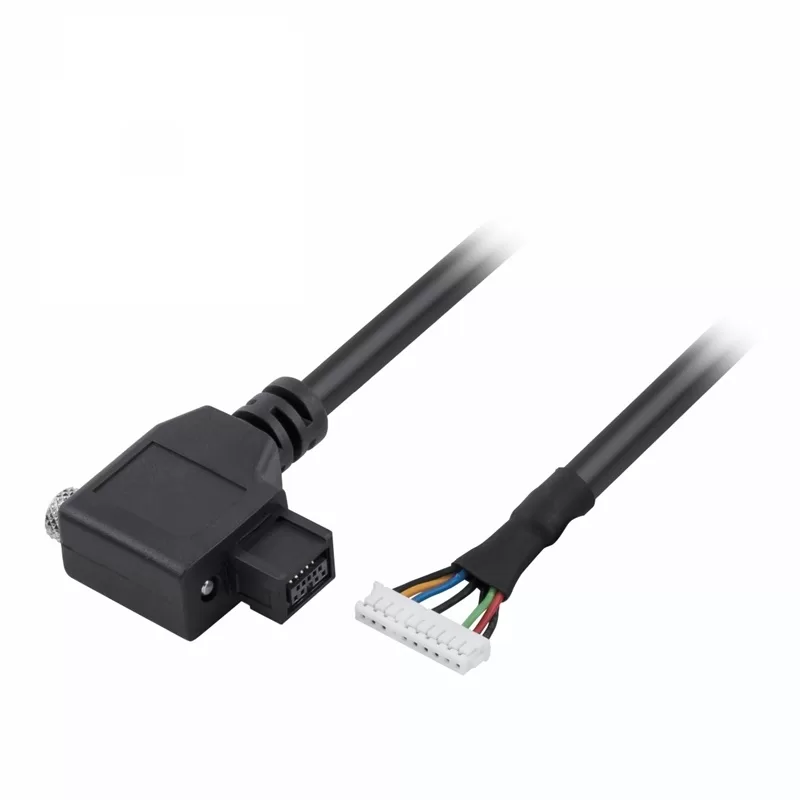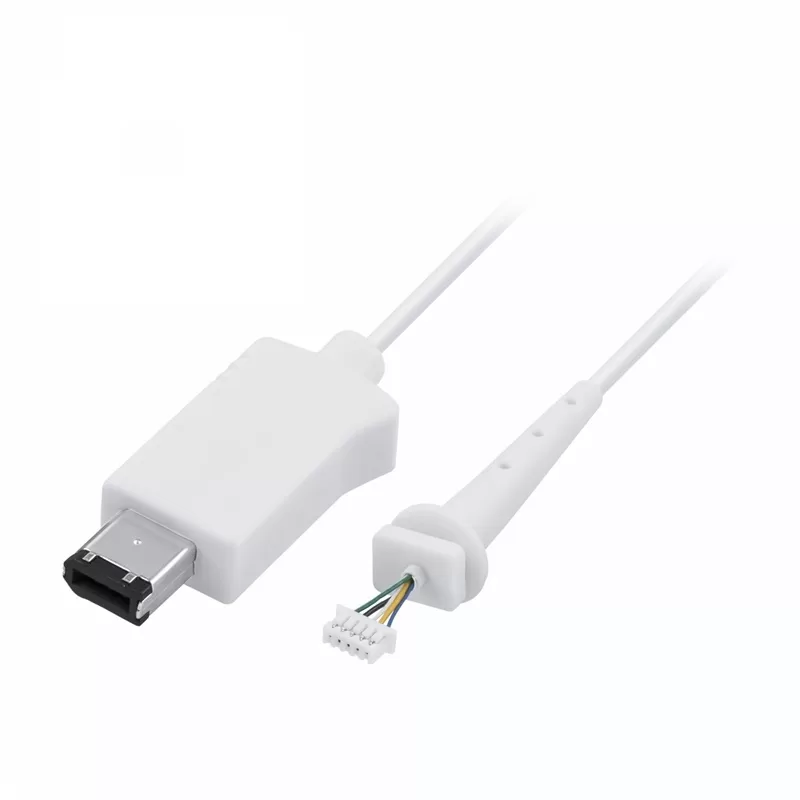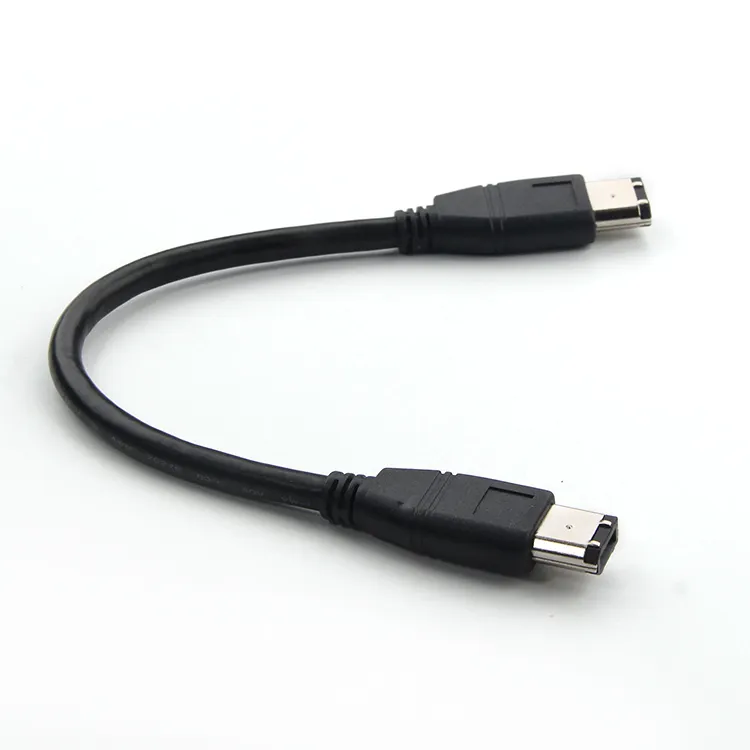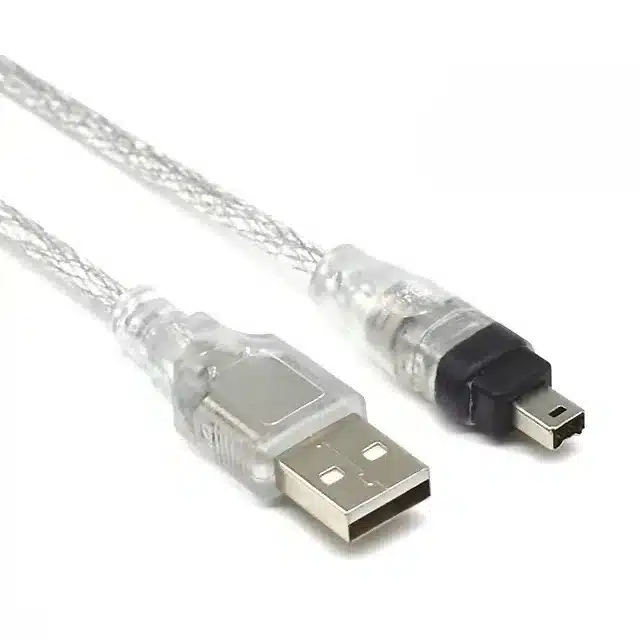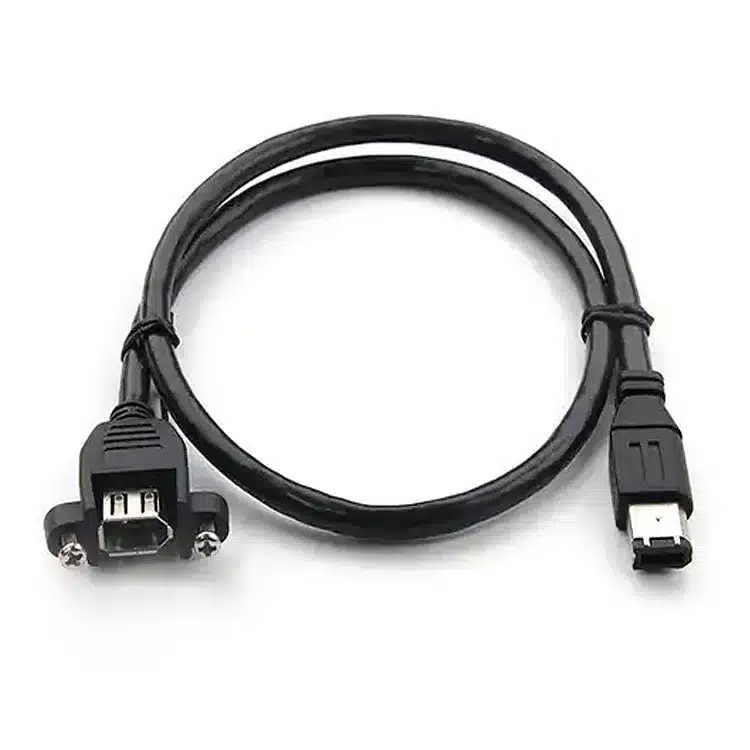
The IEEE-1394 interface, also known as Firewire, is a serial interface standard developed by the IEEE standards organization that supports up to 63 nodes and synchronous and asynchronous transfer modes.
IEEE-1394 is a commonly used connector for connecting high-speed external hard disks, CD-ROMs, DVD-ROMs, scanners, printers, digital cameras, camcorders, and other devices that require support for high transfer rates (up to 800 Mbps).
Romtronics’s experienced design and manufacturing team can create any combination of IEEE-1394 cables that meet high flexibility and environmental specifications. We provide custom FireWire (1394) cable assemblies for numerous industrial applications. Feel free to request a quote and sample our products from our factory.
Advantages of our customized IEEE 1394 cables
- Custom on demand, starting from small batch orders, and affordable prices.
- Automated production can customize high-end and complex cable assemblies with precision.
- Fast delivery: all processes are completed in-house, and orders can be completed within 10-15 working days.
- 100% product qualification rate, 300% testing, zero defects.
- Passed UL, CE, USB4 TID, and other related certifications, providing a variety of connection methods, lengths, and material options.
You may want to know more about IEEE1394 cables
IEEE 1394 cable interface form

There are three types of IEEE-1394 interfaces: 9-pin, 6-pin, and 4-pin. 6-pin interfaces are available for hexagonal shapes, and 4-pin interfaces are available for small quad shapes.
The first IEEE1394 interface developed by Apple was the 6-pin interface. Later, Sony recognized the advantage of the 6-pin interface’s fast data transfer rate and worked to improve it by creating a new design, commonly known as the 4-pin interface, called iLink.
In 2008, IEEE 1394 began promoting 9-pin interfaces and cables to meet the challenges posed by the USB 3.0 specification. As a result, IEEE-1394 is often used in printers, scanners, digital cameras, and other devices.
Transmission Speed
- IEEE1394 4PIN Transmission Speed 400Mbps.
- IEEE1394 6PIN Transmission speed is 400Mbps.
- IEEE1394 9PIN Transmission speed is 800Mbps.
Differences between IEEE 1394a and IEEE 1394b
- IEEE 1394a applies to the 400 Mbps standard, while IEEE 1394b applies to the 800 Mbps standard. Therefore, the transmission speed of IEEE 1394b is faster than IEEE 1394a, allowing for faster data transfer.
- Another difference is that IEEE 1394b is backward compatible with IEEE 1394a devices. If you need to connect a device suitable for IEEE 1394a (400 Mbps), use a cable with nine pins on one end and either six or four pins on the other, depending on the type of terminals used. Note, however, that the transfer speed will be limited to 400 Mbps when connected using this cable.
IEEE 1394a Product Test Specification
| No. | Parameter Measured | Recommended Test Conditions | Recommended Specifications |
|---|---|---|---|
| 1 | Differential Impedance | TDR Measurement 200ps Risetime | 110 Ohm ± 6 Ohm |
| 2 | Common Mode Impedance | TDR Measurement 200ps Risetime | 33 Ohm ± 6 Ohm |
| 3 | Single end Impedance | TDR Measurement 200ps Risetime | ZTPA1 = ZTPA2 ±4 % ZTPB1 = ZTPB2 ±4 % |
| 4 | Connector Impedance | TDR Measurement 500ps Risetime | 110 Ohm±25 Ohm |
| 5 | Attenuation | NA S21 Measurement 401 Points 300Hz IF BW | -2.3 dB/4.5m@100MHz -3.2 dB/4.5m@200MHz -5.8 dB/4.5m@400MHz |
| 6 | Propagation Delay | NA S21 Measurement 401 Points , 300Hz IF BW Smoothing 5% | 5.05ns/m@ 50MHz, 100MHz,200MHz |
| 7 | Inter-Pair Skew | NA S21 Measurement | 400ps/cable (max) |
| 8 | Far-end Crosstalk | NA S21 Measurement 401 Points , 300Hz IF BW Smoothing 10% | 26dB/cable (1~75MHz) |
IEEE 1394b Product Test Specification
| No. | Parameter Measured | Recommended Test Conditions | Recommended Specifications |
|---|---|---|---|
| 1 | Differential Impedance | TDR Measurement 80ps Risetime | 110 Ohm ± 6 Ohm |
| 2 | Common Mode Impedance | TDR Measurement 80ps Risetime | 33 Ohm ± 6 Ohm |
| 3 | Connector Differential Impedance | TDR Measurement 500ps Risetime | 110 Ohm ± 20 Ohm |
| 4 | Cable Attenuation | NA S21 Measurement 401 Points 300Hz IF BW | -2.3 dB/cable@250MHz -2.9 dB/cable@400MHz -3.5 dB/cable@500MHz -4.6 dB/cable@800MHz -5.5 dB/cable@1000MHz |
| 5 | Connector Attenuation | NA S21 Measurement 401 Points 300Hz IF BW | -1.0 dB/cable@250MHz -1.2 dB/cable@400MHz -1.35 dB/cable@500MHz -1.6 dB/cable@800MHz -2.0 dB/cable@1000MHz |
| 6 | Assembly Attenuation | NA S21 Measurement 401 Points 300Hz IF BW | -3.3 dB/cable@250MHz -4.1 dB/cable@400MHz -4.85 dB/cable@500MHz -6.2 dB/cable@800MHz -7.5 dB/cable@1000MHz |
| 7 | Differential Delay | NA S21 Measurement ( draft 1.33 ) smoothing 5 % & TDT Measurement ( draft 1.1 ) | 5.05ns/m |
| 8 | Common Mode Delay | NA S21 Measurement ( draft 1.33 ) & TDT Measurement ( draft 1.1 ) | 5.05ns/m |
| 9 | Inter-Pair Skew | TDT Measurement 70ps Differential Risetime | 160ps / assembly 15ps / connector |
| 10 | Intra-Pair Skew | TDT Measurement 70ps Single end Risetime | 10ps / connector |
| 11 | Assembly Crosstalk | TDT Measurement 160ps Differential Risetime | NEXT / FEXT 5% |
| 12 | Connector Crosstalk | TDT Measurement 80ps Differential Risetime | NEXT / FEXT 3% |
| 13 | Rise Time Degradation or Bandwidth | TDT Measurement 70ps Input Differential Risetime(20%,50%,80%) | 100 ps Max |
IEEE1394 Cable Pros and Cons
Advantages
- IEEE1394 also supports peripheral hot-plugging and plug-and-play.
- Support synchronized data transmission.
- 1394A can support the most extended theoretical line length of 4.5 meters.
- IEEE 1394 can be used as both an external bus and an internal bus.
Disadvantages
- Fewer applications, now that support for IEEE 1394 equipment is not required.
- IEEE1394 bus requires a significant amount of resources, so a high-speed CPU is necessary.
Frequently Asked Questions (FAQs)
Q1: What types of IEEE 1394 (FireWire) cables do you offer?
We customize IEEE 1394a (FireWire 400) and IEEE 1394b (FireWire 800) cables, including 4-pin, 6-pin, and 9-pin connectors, supporting both legacy and modern FireWire applications.
Q2: Are your 1394 cables compatible with Apple and Sony devices?
Yes. Our FireWire cables are compatible with DV cameras, external hard drives, audio interfaces, and other devices from Apple, Sony, and other manufacturers using 1394 interfaces.
Q3: Can I request custom cable lengths and overmolded connectors?
Absolutely. We offer fully custom lengths, jacket materials (PVC, PUR), and overmolded connectors with strain relief for durability and a professional appearance.
Q4: Do your IEEE 1394 cables support data transfer and power delivery?
Yes. Our cables support high-speed data transfer (up to 800 Mbps for 1394b) and, where applicable, power delivery through the 6-pin and 9-pin configurations.
Q5: Can you produce IEEE 1394 to USB or other hybrid interface cables?
While IEEE 1394 and USB are not directly compatible due to different protocols, we can integrate bridge circuitry if needed, or offer guidance on appropriate converters and custom assemblies.
Get in Touch for Custom IEEE 1394 Cable Solutions
Romtronic offers custom IEEE 1394 (FireWire) cable assemblies for high-speed data transfer applications, including video editing, industrial automation, and embedded systems. We provide various connector types, cable lengths, shielding options, and custom configurations to fit your requirements.
To request a quote, sample, or technical consultation, feel free to contact us through the form on this page or using the contact details below — our team will respond within 12 hours with professional support.
📧 Email: info@romtronic.com
📞 Phone: (+86) 199-2816-5824
Romtronic delivers reliable, high-quality IEEE 1394 cable solutions trusted by global OEMs and integrators.

